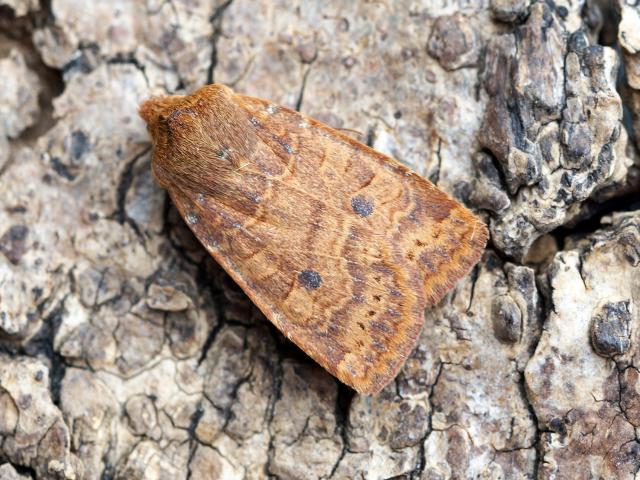By now most recorders will have dusted down their moth traps and started the season in earnest.
Those who waited until the start of the ‘meteorological spring’ (1 March) will not be surprised that they haven’t missed much as the weather was pretty abysmal for the best part, with very little reported across the British Isles. There were some unexpected highlights - the migrant Dark Sword-grass Agrotis ipsilon and Humming-bird Hawk-moth Macroglossum stellatarum, the latter some believe may have overwintered.
To-date here at BC Towers, I’ve only managed to get the moth trap out for 11 nights, half of these nights have been over the past fortnight. Anyway, here’s the species list so far:
| March Tubic | Diurnea fagella |
| Parsnip Moth | Depressaria heraclei |
| Common Flat-body | Agonopterix heracliana |
| Yellow Horned | Achlya flavicornis |
| March Moth | Alsophila aescularia |
| Early Thorn | Selenia dentaria |
| Pale Brindled Beauty | Phigalia pilosaria |
| Oak Beauty | Biston strataria |
| Dotted Border | Agriopis marginaria |
| Engrailed | Ectropis crepuscularia |
| Early Moth | Theria primaria |
| Small Quaker | Orthosia cruda |
| Common Quaker | Orthosia cerasi |
| Clouded Drab | Orthosia incerta |
| Hebrew Character | Orthosia gothica |
| Grey Shoulder-knot | Lithophane ornitopus |
| Early Grey | Xylocampa areola |
| Satellite | Eupsilia transversa |
Moth recorders should take note of the new British Lepidoptera checklist which was published in December. A completely new coding system has replaced the Bradley & Fletcher numbers and a number of nomenclature changes have been introduced. It’s likely to take some time for the major biological recording packages and online recording systems to switch to the new system. But some more localised online recording systems i.e. County Moth Group websites may have already converted to the new checklist. My advice is to talk to your County Moth Recorder.
It’s not just the new coding systems causing moth-ers confusion.
An identification problem I’ve noticed recently is people taking the vernacular or English name of a moth too literally; an example of this is Chestnut Conistra vaccinii and Dark Chestnut Conistra ligula. Be aware that a dark Chestnut isn’t a Dark Chestnut. The distinguishing feature isn’t anything to do with how light or dark each species is, it is the shape of the outer edge of the forewing. Check out the following images: Chestnut C. vaccinii on the left and Dark Chestnut C. ligula on the right.


A similar problem exists with Clouded Drab Orthosia incerta and Lead-coloured Drab Orthosia populeti. It isn’t the colour of the moth that determines the species, it is the shape of the outer edge of the forewing, plus in male Lead-coloured Drab O. populeti, the antenna is feathered. To illustrate this, Clouded Drab O. incerta is on the left and a male Lead-coloured Drab O.
populeti is on the right.
These are just a couple of examples but there are plenty of other misleading moth names, so do keep an eye out for these.
Good luck!
Les Hill
Senior Data Manager, National Moth Recording Scheme and Dorset County Macro-moth Recorder
Follow me on Twitter @DorsetMoths


